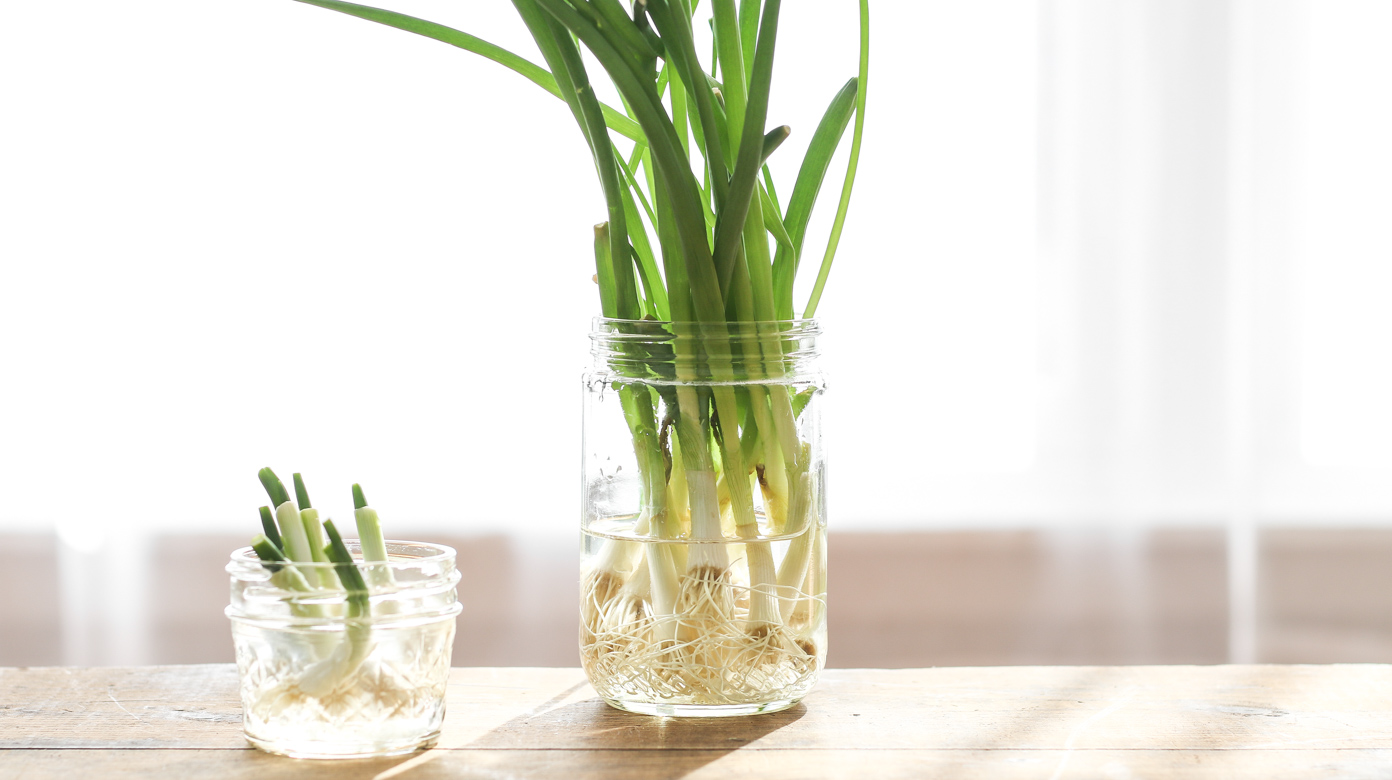

Articles
How To Store Green Onions In Water
Modified: March 24, 2024
Learn how to store green onions in water with this helpful article. Find out the best method and prolong the freshness of your green onions.
(Many of the links in this article redirect to a specific reviewed product. Your purchase of these products through affiliate links helps to generate commission for Storables.com, at no extra cost. Learn more)
Introduction
Green onions, also known as scallions or spring onions, are a versatile ingredient that adds a fresh and vibrant flavor to various dishes. They are commonly used in salads, stir-fries, soups, and garnishes. However, green onions can wilt and lose their freshness quickly if not stored properly. One effective method to keep them crisp and flavorful for an extended period is by storing them in water.
Storing green onions in water not only helps maintain their freshness but also allows them to continue growing, providing a fresh supply of green onions for weeks. This method is simple and requires minimal effort, making it an excellent option for anyone looking to maximize the lifespan of their green onions.
Key Takeaways:
- Storing green onions in water extends their shelf life, promotes continuous growth, and offers convenience. Whether on the countertop or in the refrigerator, this method reduces food waste and provides a sustainable, cost-effective solution for fresh green onions.
- Hydroponic gardening allows for sustainable, soil-free green onion cultivation. By providing optimal nutrition and controlled conditions, this method ensures a continuous supply of fresh, flavorful green onions while minimizing space and resources.
Read more: How To Store Green Onion In Fridge
Benefits of Storing Green Onions in Water
There are several benefits to storing green onions in water:
- Extended Shelf Life: Green onions stored in water can remain fresh for up to two weeks or even longer.
- Continuous Growth: Placing the green onion bulbs in water encourages new growth, allowing you to have a steady supply of fresh green onions.
- Cost-effective: By storing green onions in water, you can reduce food waste and save money by not having to purchase new bunches of green onions as frequently.
- Convenience: Storing green onions in water provides easy access to fresh green onions whenever you need them, eliminating the need for frequent trips to the grocery store.
Preparing the Green Onions for Storage
Before storing green onions in water, it is important to properly prepare them to ensure optimal freshness and growth. Follow these steps:
- Trim the Roots: Start by trimming the roots of the green onions. Cut off about half an inch from the end, removing any brown or dry parts.
- Remove any Damaged Outer Layers: Gently peel off any discolored or damaged outer layers of the green onions.
- Cut off the Tips: If the tips of the green onions appear wilted, you can trim them off to ensure the best possible quality.
By taking these preparatory steps, you can ensure that the green onions are healthy and primed for storage in water.
Key Takeaways:
- Storing green onions in water extends their shelf life, promotes continuous growth, and offers convenience. Whether on the countertop or in the refrigerator, this method reduces food waste and provides a sustainable, cost-effective solution for fresh green onions.
- Hydroponic gardening allows for sustainable, soil-free green onion cultivation. By providing optimal nutrition and controlled conditions, this method ensures a continuous supply of fresh, flavorful green onions while minimizing space and resources.
Read more: How To Store Green Onion In Fridge
Benefits of Storing Green Onions in Water
Storing green onions in water offers numerous advantages, making it a worthwhile method for preserving their freshness and flavor. Here are the key benefits of storing green onions in water:
- Extended Shelf Life: Green onions typically wilt and lose their freshness after a few days if left in the refrigerator or on the countertop. However, when stored in water, green onions can stay crisp and vibrant for up to two weeks or even longer, depending on the freshness of the initial bunch.
- Continuous Growth: One of the unique advantages of storing green onions in water is that they can continue to grow. The green onion bulbs that are submerged in water will sprout new roots and grow new green shoots, providing you with a fresh supply of green onions without the need to buy new bunches.
- Cost-effective: By storing green onions in water, you can significantly reduce food waste and save money. Rather than throwing away wilted green onions, you can trim off the spoiled parts and place the bulbs in water to regenerate new growth. This not only helps you maximize the use of each bunch of green onions but also eliminates the need to purchase them frequently.
- Convenience: Having a ready supply of fresh green onions at your fingertips can be incredibly convenient. Whether you need a garnish for a dish or want to add some freshness to your salads or stir-fries, all you have to do is snip off the desired amount from your stored green onions. This eliminates the need for frequent trips to the grocery store and ensures that you always have this versatile ingredient on hand.
- Easy Maintenance: Storing green onions in water requires minimal effort. Once you have trimmed and prepared the green onions, you can simply place the bulbs in a container with water and set it in a suitable location. No additional maintenance or special equipment is needed. It’s a hassle-free method that can easily fit into any busy lifestyle.
- Environmentally Friendly: By utilizing the water storage method for green onions, you contribute to reducing food waste and the overall carbon footprint. It’s a sustainable approach that aligns with the principles of eco-conscious living, as it allows you to make the most of the resources you have and reduce unnecessary waste.
With its ability to extend shelf life, support continuous growth, save money, offer convenience, require minimal maintenance, and promote sustainability, storing green onions in water is a practical and advantageous approach for anyone who enjoys using this versatile ingredient in their cooking.
Preparing the Green Onions for Storage
Before you can store green onions in water, it’s important to properly prepare them to ensure optimal freshness and successful growth. Follow these simple steps to prepare your green onions for storage:
- Trim the Roots: Begin by trimming the roots of the green onions. Using a sharp knife or kitchen shears, cut off about half an inch from the end of the roots. This will help remove any dry or damaged parts and promote better water absorption.
- Remove any Damaged Outer Layers: Gently peel off any discolored or damaged outer layers of the green onions. This will help improve the appearance and quality of the stored green onions.
- Cut off the Tips: If the tips of the green onions appear wilted or dry, it’s a good idea to trim them off. This ensures that you are starting with the freshest parts and helps maintain the overall quality of the stored green onions.
By following these preparation steps, you ensure that your green onions are in the best condition to be stored in water. This will help maintain their freshness and encourage new growth.
Once the green onions are prepared, there are different methods you can use to store them in water:
Read more: How To Store Cut Green Onions
Method 1: Storing Green Onions in Water on the Countertop
This method is ideal if you want to keep your green onions easily accessible on the countertop while allowing them to continue growing. Here’s how to do it:
- Choose a Suitable Container: Select a glass or plastic container that is tall enough to accommodate the green onion bulbs and allows them to stand upright. The container should be wide enough to hold several green onions without them touching each other.
- Add Water: Fill the container with enough water to cover the roots of the green onions. Make sure to use filtered or distilled water as tap water may contain chlorine or other chemicals that can affect the growth and flavor of the green onions.
- Place the Green Onion Bulbs in the Container: Carefully lower the prepared green onion bulbs into the container, ensuring that the roots are submerged in water while the green shoots remain above the water level. Arrange them in a way that they are not crowded, allowing sufficient space for each green onion to grow.
- Find a Suitable Location: Place the container in a well-lit area, such as a sunny windowsill or a spot with indirect sunlight. Green onions need ample light to photosynthesize and grow, so providing them with proper lighting is essential.
- Change the Water: Regularly check the water level and replace it every two to three days, or whenever it becomes cloudy or dirty. Maintaining clean water helps prevent the growth of bacteria and keeps the green onions fresh.
By following these steps, you can successfully store green onions in water on your countertop. This method allows for easy access and continuous growth of fresh green onions.
Method 2: Storing Green Onions in Water in the Refrigerator
If you prefer to store your green onions in the refrigerator for extended freshness, you can follow this method:
- Choose a Suitable Container: Similar to the countertop method, select a glass or plastic container that can accommodate the green onion bulbs and allow them to stand upright. Make sure the container fits comfortably in your refrigerator.
- Add Water: Fill the container with enough water to cover the roots of the green onions. Ensure that the water level is not too high, as it may spill or make a mess in the refrigerator.
- Place the Green Onion Bulbs in the Container: Carefully place the prepared green onion bulbs in the container, ensuring that the roots are submerged in water while the green shoots remain above the water line. Arrange them in a way that they are not overcrowded.
- Seal the Container: Place a perforated plastic bag or cover the container with a plastic wrap to create a slightly humid environment inside. This helps prevent excessive moisture loss from the green onions and maintains their freshness.
- Store in the Refrigerator: Put the container of green onions in the refrigerator, ideally in the vegetable crisper drawer or an area with consistent humidity and temperature. Avoid storing them near fruits or vegetables that produce ethylene gas, as it can cause premature aging and wilting of the green onions.
- Change the Water: Every few days, check the water level and change it if necessary to ensure freshness and cleanliness.
By following these steps, you can store green onions in water in the refrigerator, extending their shelf life while keeping them easily accessible for your cooking needs.
Method 3: Growing Green Onions Hydroponically
If you’re looking for a more advanced and sustainable method, you can try growing green onions hydroponically. This technique allows you to grow green onions using only water, eliminating the need for soil. Here’s how to do it:
- Prepare a Hydroponic System: Set up a hydroponic system, such as a small water reservoir with an air pump and airstone, or a specialized hydroponic kit designed for growing greens.
- Trim the Green Onions: Trim the green onion bulbs, leaving about an inch of the green shoots attached to the bulbs.
- Submerge the Bulbs in Water: Place the trimmed green onion bulbs in net pots or any other suitable containers and suspend them just above the water level, ensuring that the roots dangle into the water.
- Add Nutrient Solution: Mix a hydroponic nutrient solution following the manufacturer’s instructions and add it to the water in the reservoir. This provides the necessary nutrients for the green onions to grow without soil.
- Provide Light and Oxygen: Place the hydroponic system in a well-lit area or use grow lights to provide enough light for the green onions to photosynthesize. Ensure that the water maintains appropriate oxygenation using the air pump and airstone.
- Maintain the System: Monitor the water levels, pH, and nutrient levels regularly, making adjustments as needed to ensure optimal growing conditions for the green onions.
Growing green onions hydroponically allows for a continuous supply of fresh green onions without the need for soil. It’s a great option for those interested in sustainable gardening and maximizing their green onion harvest.
Tips for Maintaining the Freshness of Green Onions in Water
To ensure the best results when storing green onions in water, consider the following tips:
- Change the water regularly to prevent bacterial growth and maintain freshness.
- Trim any slimy or yellowing parts from the green onions to prevent contamination.
- Store the green onions away from ethylene-producing fruits and vegetables to prevent premature wilting.
- Ensure that the green onions receive sufficient sunlight or artificial light for healthy growth.
- Monitor the water levels and refill as necessary to maintain proper hydration.
- Inspect the green onions regularly for any signs of spoilage and discard if necessary.
By following these tips, you can maximize the lifespan and quality of your stored green onions, allowing you to enjoy their fresh flavors for an extended period.
Whether you choose to store them on the countertop, in the refrigerator, or experiment with hydroponics, storing green onions in water is a simple and effective way to prolong their freshness and ensure a continuous supply in your kitchen. Start utilizing this method today and say goodbye to wilted green onions and wasted ingredients!
Read more: How To Store Green Onion
Method 1: Storing Green Onions in Water on the Countertop
Storing green onions in water on the countertop is a convenient method that allows you to have easy access to fresh green onions while encouraging continuous growth. Follow these steps to store green onions in water on your countertop:
- Choose a Suitable Container: Select a glass or plastic container that is tall enough to accommodate the green onion bulbs and allows them to stand upright. The container should be wide enough to hold several green onions without them touching each other.
- Add Water: Fill the container with enough water to cover the roots of the green onions. It’s best to use filtered or distilled water to avoid any potential chemicals that tap water may contain, which can affect the growth and flavor of the green onions.
- Place the Green Onion Bulbs in the Container: Carefully lower the prepared green onion bulbs into the container, making sure that the roots are submerged in water while the green shoots remain above the water level. Arrange them in a way that they are not overcrowded, allowing sufficient space for each green onion to grow.
- Find a Suitable Location: Place the container in a well-lit area, such as a sunny windowsill or a spot with indirect sunlight. Green onions need ample light to photosynthesize and grow, so providing them with proper lighting is crucial for their well-being.
- Change the Water: Regularly check the water level and replace it every two to three days, or whenever it becomes cloudy or dirty. Fresh and clean water helps prevent the growth of bacteria and keeps the green onions fresh for a longer period.
By following these steps, you can successfully store green onions in water on your countertop, providing you with a continuous supply of fresh green onions for your culinary needs.
It’s important to note that while storing green onions in water on the countertop promotes continuous growth, the green onions will eventually exhaust their energy and may need to be replaced with new ones for optimal flavor and quality. However, this method is still an efficient way to extend their shelf life and enjoy their vibrant taste in recipes without the need for frequent trips to the grocery store.
With your stored green onions on the countertop, you can easily snip off the desired amount whenever you need them, adding a burst of freshness to your salads, stir-fries, soups, or other dishes. It’s a convenient and cost-effective way to have a ready supply of this versatile ingredient right at your fingertips.
Experiment with different varieties of green onions and observe how they continue to grow and thrive in water. This method not only benefits your culinary endeavors but also adds a touch of greenery to your kitchen space, creating a visually pleasing and functional element.
Keep in mind to monitor the freshness of the stored green onions and discard any that show signs of spoilage or decay. By taking proper care of your green onions in water on the countertop, you can enjoy their fresh flavor and vibrant appearance for an extended period, ensuring that you never run out of this essential ingredient in your cooking.
Change the water every few days to keep green onions fresh. Trim the roots if they start to look slimy. Store in a glass with enough water to cover the roots.
Method 2: Storing Green Onions in Water in the Refrigerator
If you prefer to store your green onions in the refrigerator for extended freshness, you can follow this method:
- Choose a Suitable Container: Select a glass or plastic container that can accommodate the green onion bulbs and allow them to stand upright. Make sure the container fits comfortably in your refrigerator.
- Add Water: Fill the container with enough water to cover the roots of the green onions. Ensure that the water level is not too high, as it may spill or create a mess in the refrigerator.
- Place the Green Onion Bulbs in the Container: Carefully place the prepared green onion bulbs in the container, ensuring that the roots are submerged in water while the green shoots remain above the water line. Arrange them in a way that they are not overcrowded.
- Seal the Container: To create a slightly humid environment, cover the container with a perforated plastic bag or plastic wrap. This helps prevent excessive moisture loss from the green onions and maintains their freshness.
- Store in the Refrigerator: Place the container of green onions in the refrigerator, preferably in the vegetable crisper drawer or an area with consistent humidity and temperature. Avoid storing them near fruits or vegetables that produce ethylene gas, as it can cause premature aging and wilting of the green onions.
- Change the Water: Every few days, check the water level and change it if necessary to ensure freshness and cleanliness. This helps prevent the buildup of bacteria and maintains the quality of the green onions.
By following these steps, you can store green onions in water in the refrigerator, significantly extending their shelf life while keeping them easily accessible for your cooking needs.
Storing green onions in water in the refrigerator provides an excellent balance between convenience and longevity. Unlike storing them on the countertop, refrigeration helps slow down the aging process and keeps the green onions fresh for an extended period. This allows you to enjoy their crispness and vibrant flavor whenever you need them.
When stored properly in the refrigerator, green onions can remain fresh for up to two weeks or longer. This makes it convenient for meal planning, as you can have a steady supply of fresh green onions readily available without the need for frequent grocery store visits.
Having your green onions stored in the refrigerator also eliminates the concern of wilting or spoiling, which can be a common issue when storing them without water. The consistent cool temperature helps maintain their texture and flavor, ensuring that they are at their best when you’re ready to use them.
Before using the refrigerated green onions, check their freshness by inspecting the shoots and leaves. If they show any signs of sliminess, discoloration, or a foul smell, it’s best to discard them as they may have spoiled.
Remember to change the water every few days to prevent bacterial growth and maintain optimal freshness. This simple practice goes a long way in preserving the quality of the stored green onions.
By utilizing this method, you can enjoy the convenience of having fresh green onions at your disposal, ready to enhance the flavors of your favorite recipes whenever you desire. It’s a practical and effective way to extend the life of your green onions and reduce food waste.
So, next time you purchase a bunch of green onions, consider using this method to store them in water in the refrigerator. You’ll have a consistent supply of fresh green onions for your culinary creations, adding a delightful touch of flavor and color to your dishes.
Method 3: Growing Green Onions Hydroponically
If you’re looking for a more advanced and sustainable approach to growing green onions, you can try the method of hydroponics. Hydroponic gardening allows you to grow plants without soil, relying on a nutrient-rich water solution to nourish the plants. Here’s how you can grow green onions hydroponically:
- Prepare a Hydroponic System: Set up a hydroponic system suitable for growing green onions. This can be a small water reservoir with an air pump and airstone, or a specialized hydroponic kit designed for growing greens.
- Trim the Green Onions: Trim the green onion bulbs, leaving about an inch of the green shoots attached to the bulbs. This ensures that there is enough foliage for photosynthesis and growth.
- Submerge the Bulbs in Water: Place the trimmed green onion bulbs in net pots or any other suitable containers. Suspend the bulbs just above the water level, ensuring that the roots dangle into the water. The nutrient solution will continuously feed the roots for optimal growth.
- Add Nutrient Solution: Mix a hydroponic nutrient solution following the instructions provided with your hydroponic system. The nutrient solution provides the essential elements needed for the green onions to grow without soil. Make sure to monitor and adjust the nutrient levels as needed to maintain proper plant nutrition.
- Provide Light and Oxygen: Place the hydroponic system in a well-lit area. Green onions require adequate light for photosynthesis, so ensure they receive enough natural sunlight or use grow lights to provide the necessary light intensity. Additionally, provide oxygenation to the water using an air pump and airstone to ensure the roots receive oxygen for healthy growth.
- Maintain the System: Regularly monitor the water levels, pH levels, and nutrient levels in your hydroponic system. Make adjustments as necessary to maintain optimal growing conditions for the green onions. Also, keep an eye out for any signs of disease or nutrient deficiencies and take appropriate measures to address them.
Growing green onions hydroponically offers several advantages, such as efficient nutrient uptake, controlled growing conditions, and reduced risk of soil-borne pests and diseases. It also allows for year-round cultivation and maximizes the use of space.
With proper maintenance and care, your hydroponically grown green onions will continue to thrive, providing you with a continuous supply of fresh and flavorful greens. As they grow, you can harvest the green shoots or the whole green onion as desired, ensuring you always have a fresh source of this versatile ingredient.
Remember to regularly check the water levels, pH levels, and nutrient levels in your hydroponic system to ensure optimal growth. Keep the system clean and free from algae or debris that can impede the growth of the green onions.
Hydroponic gardening is a rewarding endeavor that allows you to enjoy the benefits of fresh homegrown green onions. It’s an environmentally friendly and sustainable method that requires minimal space and resources compared to conventional gardening.
So, if you’re looking to take your green onion cultivation to the next level, give hydroponics a try. Not only will you enjoy the process of growing your own food, but you’ll also have a ready supply of fresh and flavorful green onions for your meals throughout the year.
Tips for Maintaining the Freshness of Green Onions in Water
To ensure that your green onions stay fresh and vibrant while stored in water, consider the following tips:
- Change the Water Regularly: Water can become stagnant over time, leading to the growth of bacteria and a decrease in freshness. To keep your green onions crisp and flavorful, change the water every two to three days or whenever it becomes cloudy or dirty. Fresh water helps maintain the quality and prolongs the lifespan of your green onions.
- Trim Off Slimy or Yellowing Parts: Regularly inspect your green onions for any slimy or yellowing parts. These areas can harbor bacteria and affect the overall freshness of the green onions. Trim off any damaged or spoiled sections before placing them back in fresh water.
- Store Away from Ethylene-Producing Fruits and Vegetables: Ethylene gas is a naturally occurring hormone that certain fruits and vegetables release as they ripen. Exposure to ethylene can accelerate the wilting and aging process of green onions. Keep your green onions away from ethylene-producing produce such as apples, bananas, and tomatoes to maintain their freshness for a longer period.
- Ensure Sufficient Light: Green onions need access to adequate light for photosynthesis, even when stored in water. Ensure that your stored green onions are placed in a well-lit area, such as a sunny windowsill or a spot with indirect sunlight. If natural light is limited, consider using artificial grow lights to provide the necessary light energy for the green onions to stay healthy and continue growing.
- Monitor Water Levels: Regularly check the water levels in the container to ensure that the roots of the green onions are always submerged. If the water level drops below the roots, the green onions may not receive enough hydration and can start to wilt. Keep a close eye on the water levels and replenish as needed to maintain proper hydration.
- Inspect for Spoilage: Regularly inspect your stored green onions for any signs of spoilage. If you notice a slimy texture, foul smell, or any other indications of decay, it’s best to discard those green onions to prevent the spread of bacteria. Regular inspection helps ensure that you only use fresh and safe green onions in your cooking.
By following these tips, you can maximize the freshness and flavor of your green onions stored in water. With proper care and attention, you’ll have a steady supply of vibrant green onions to enhance the taste and presentation of your favorite dishes.
Remember, maintaining the freshness of green onions in water is essential for optimal taste and texture. By implementing these tips into your routine, you’ll be able to enjoy the full potential of this versatile ingredient throughout its extended shelf life.
Read more: How To Store Fresh Green Onion
Conclusion
Storing green onions in water is a simple and effective method to extend their shelf life, maintain their freshness, and ensure a continuous supply of this versatile ingredient. Whether you choose to store them on the countertop, in the refrigerator, or experiment with hydroponics, each method offers its unique benefits and allows you to enjoy the flavors and nutritional benefits of green onions for an extended period.
By storing green onions in water, you can reap several advantages. You’ll benefit from an extended shelf life of up to two weeks or more, reducing food waste and saving money. Storing green onions in water also provides the opportunity for continuous growth, allowing you to have a fresh supply of green onions without the need to purchase new bunches frequently. This contributes to a more sustainable lifestyle and reduces your carbon footprint.
Whether you choose to store them on the countertop or in the refrigerator, both methods require minimal effort and offer convenience. You’ll have easy access to fresh green onions whenever you need them, adding a burst of flavor and vibrancy to your dishes. The countertop method promotes continuous growth, while the refrigerator method provides better preservation and a longer shelf life.
For those interested in taking their green onion storage to a more advanced level, hydroponic gardening offers a sustainable and efficient approach. It allows you to grow green onions without soil, providing optimal nutrition and controlled growing conditions for healthy and thriving plants.
Regardless of the storage method you choose, it’s important to follow some general tips for maintaining the freshness of green onions in water. Changing the water regularly, keeping the green onions away from ethylene-producing fruits and vegetables, ensuring sufficient light, monitoring water levels, and inspecting for spoilage are vital practices to preserve the quality and flavor of your green onions.
In conclusion, storing green onions in water is an excellent way to enhance their freshness and extend their lifespan. By incorporating these storage methods into your routine, you can enjoy the convenience, cost savings, and taste of fresh green onions throughout the year. So, why not give it a try and enjoy the benefits of this simple yet effective storage technique for green onions?
Frequently Asked Questions about How To Store Green Onions In Water
Was this page helpful?
At Storables.com, we guarantee accurate and reliable information. Our content, validated by Expert Board Contributors, is crafted following stringent Editorial Policies. We're committed to providing you with well-researched, expert-backed insights for all your informational needs.

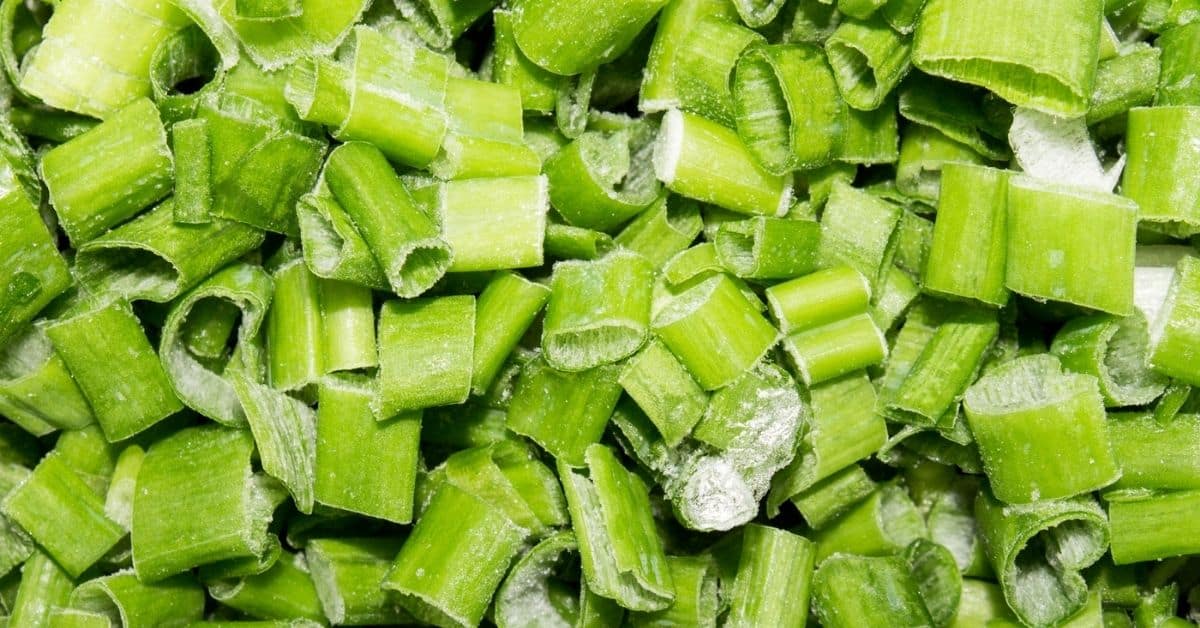
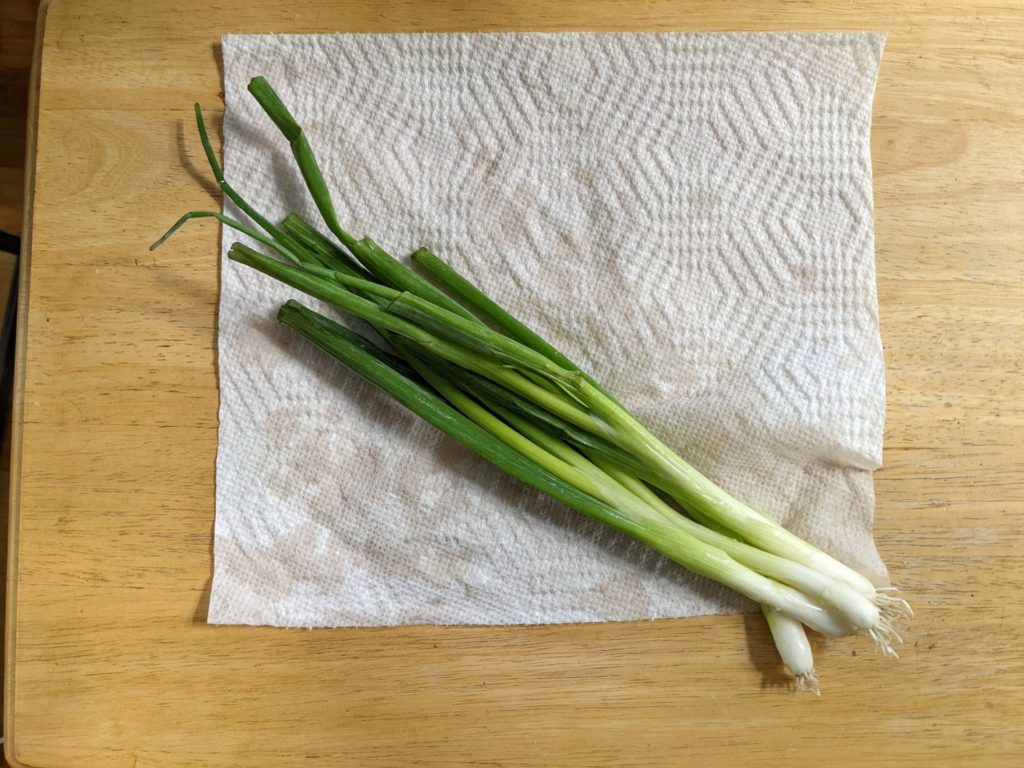
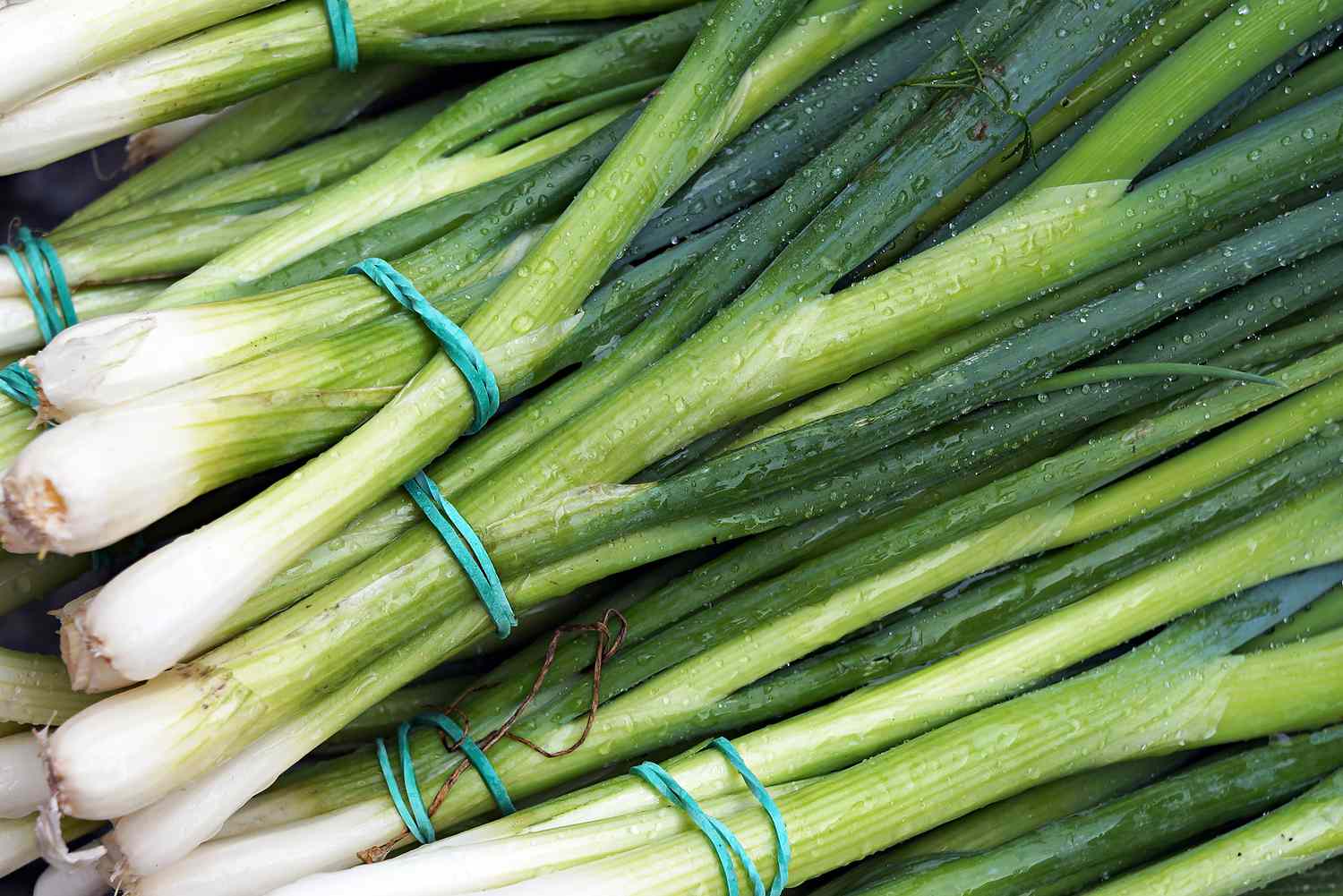
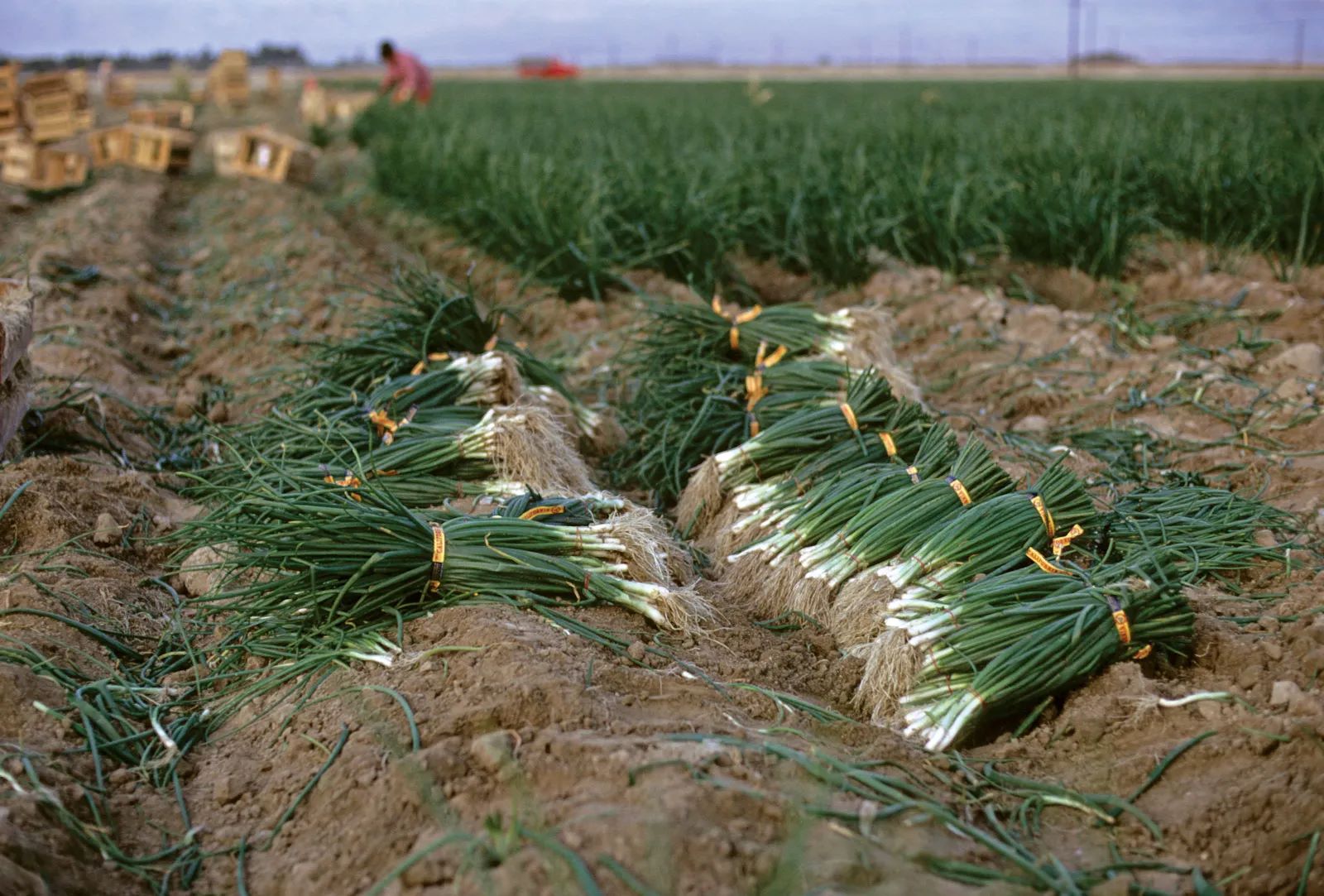
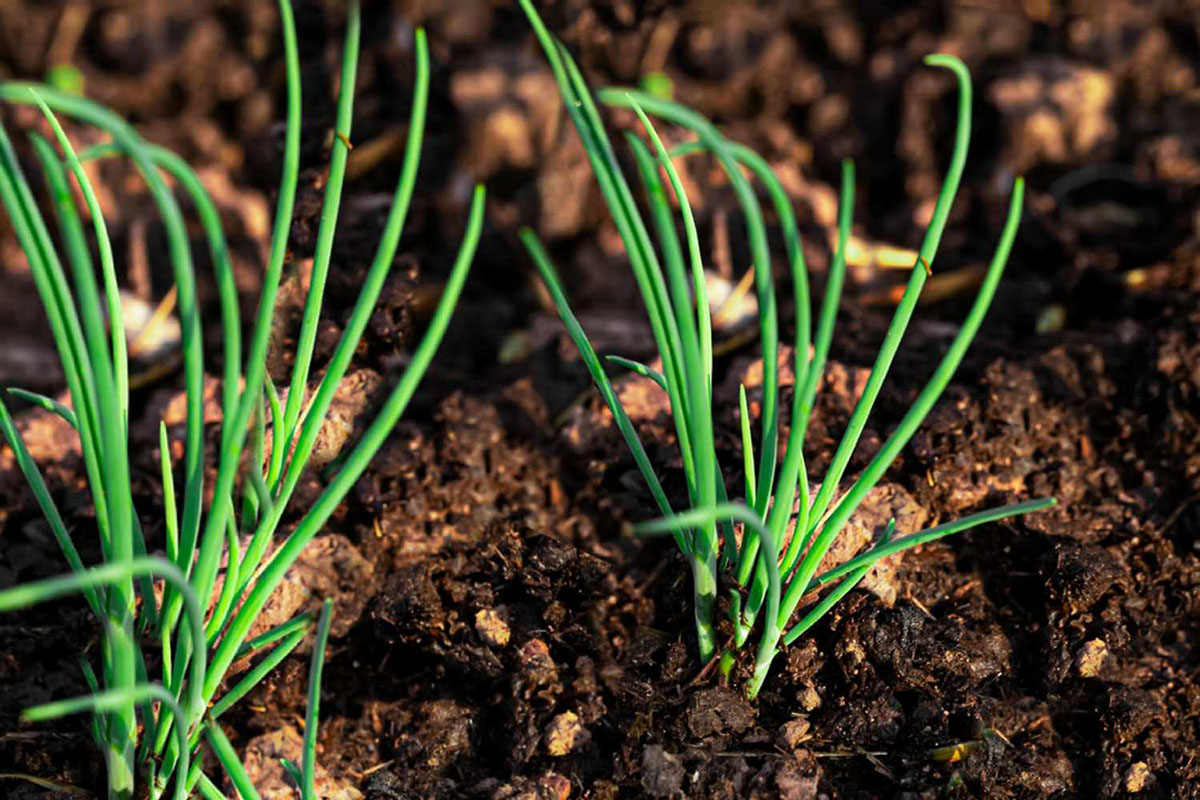
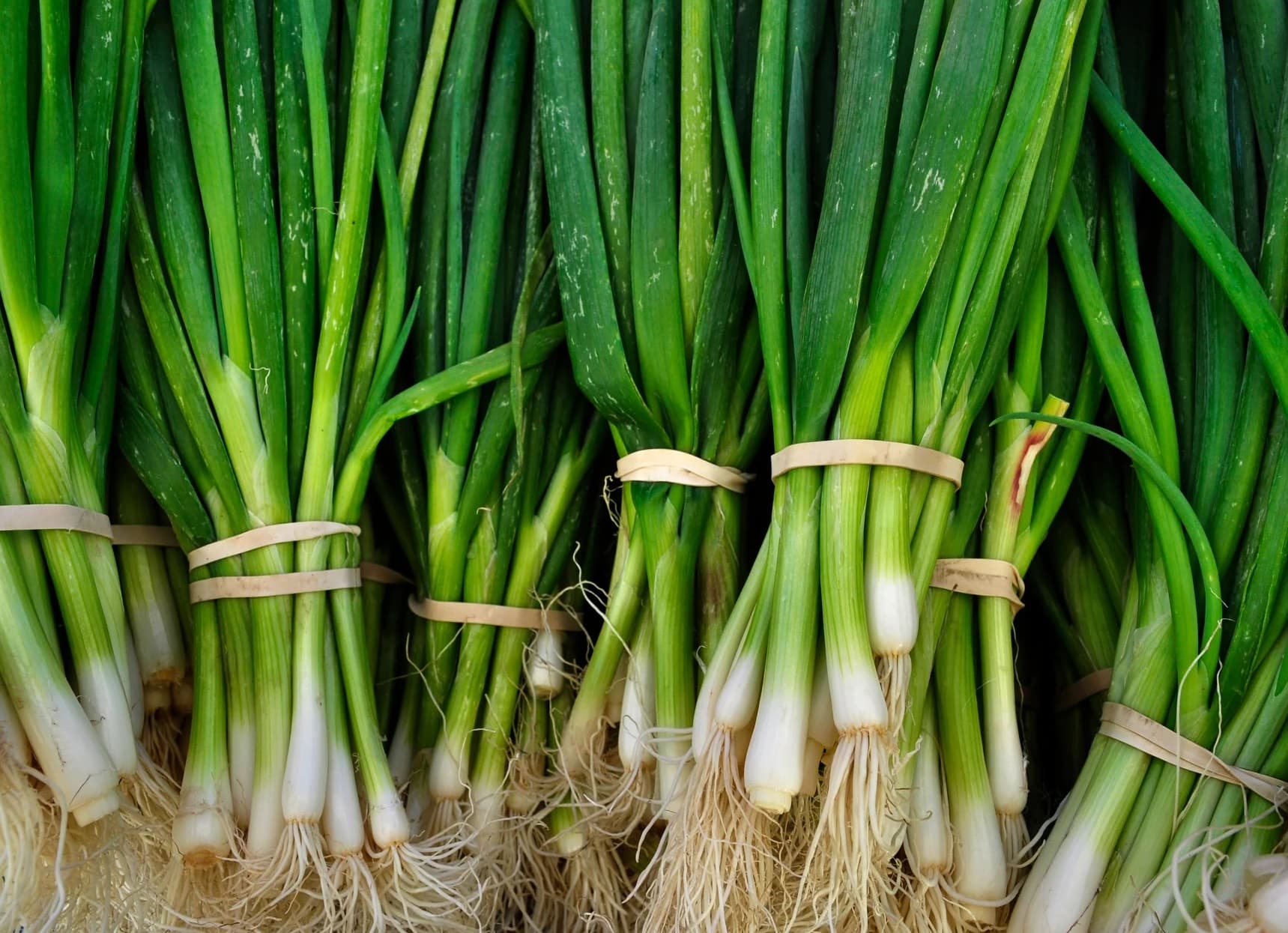
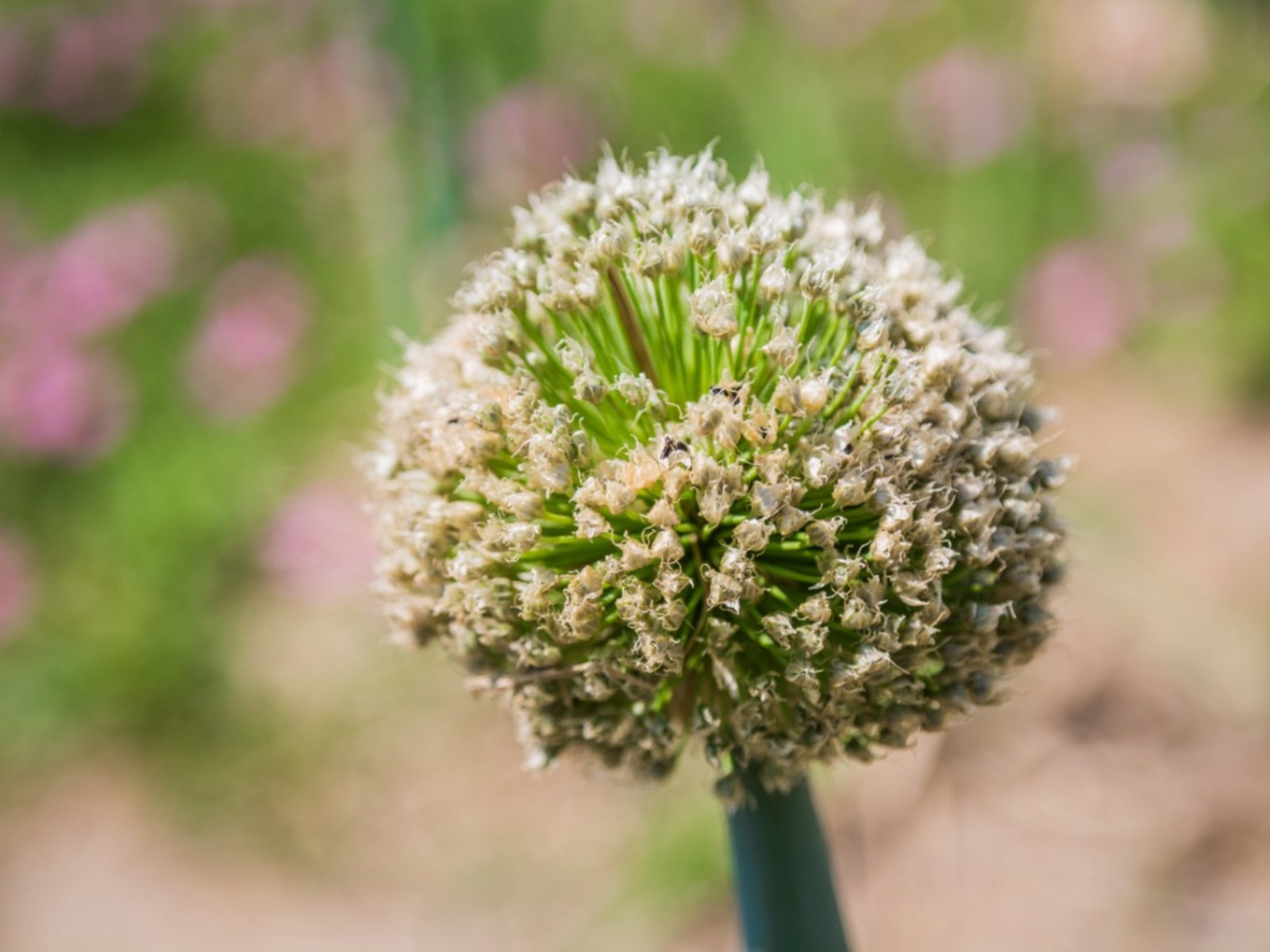
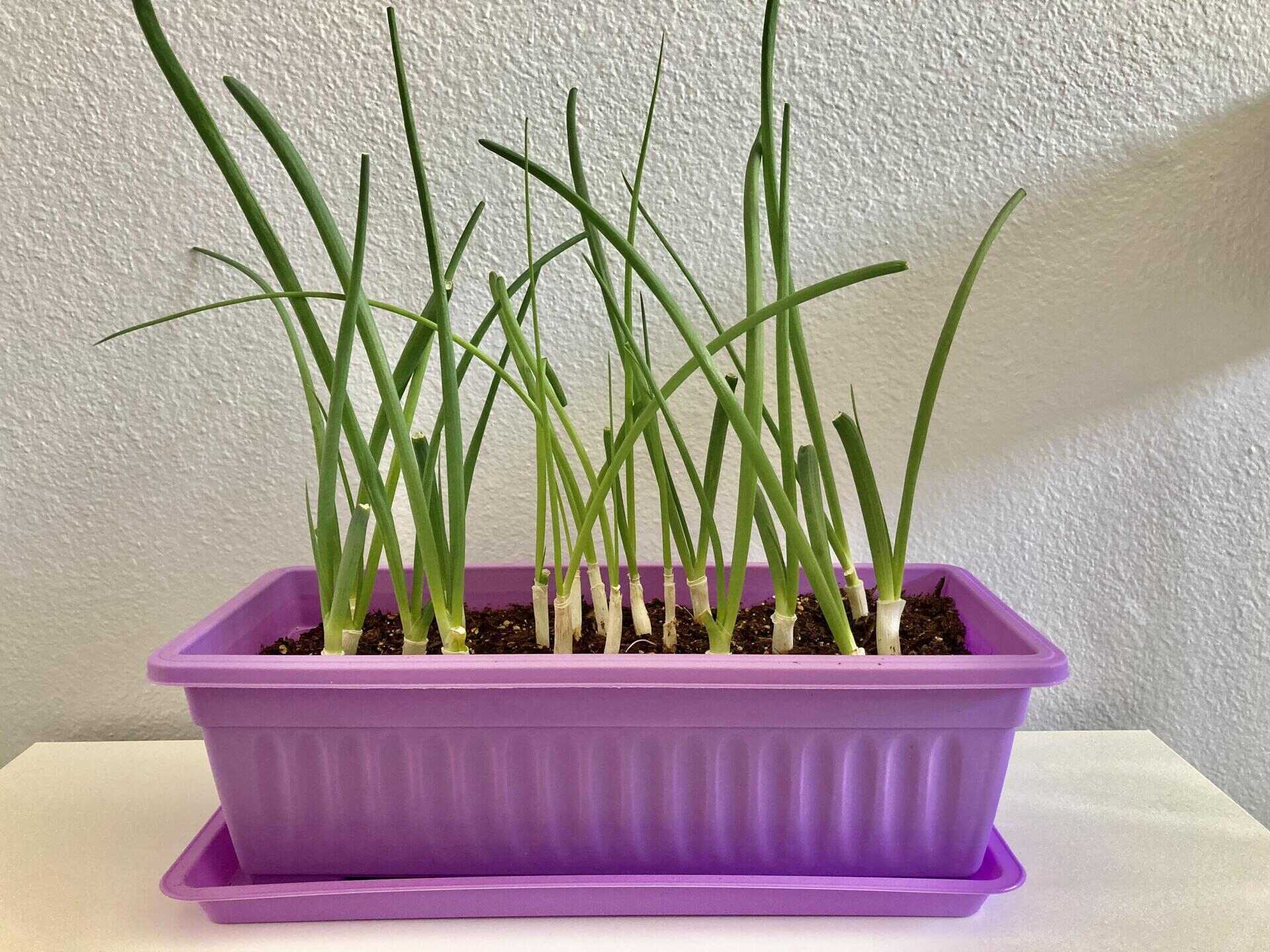
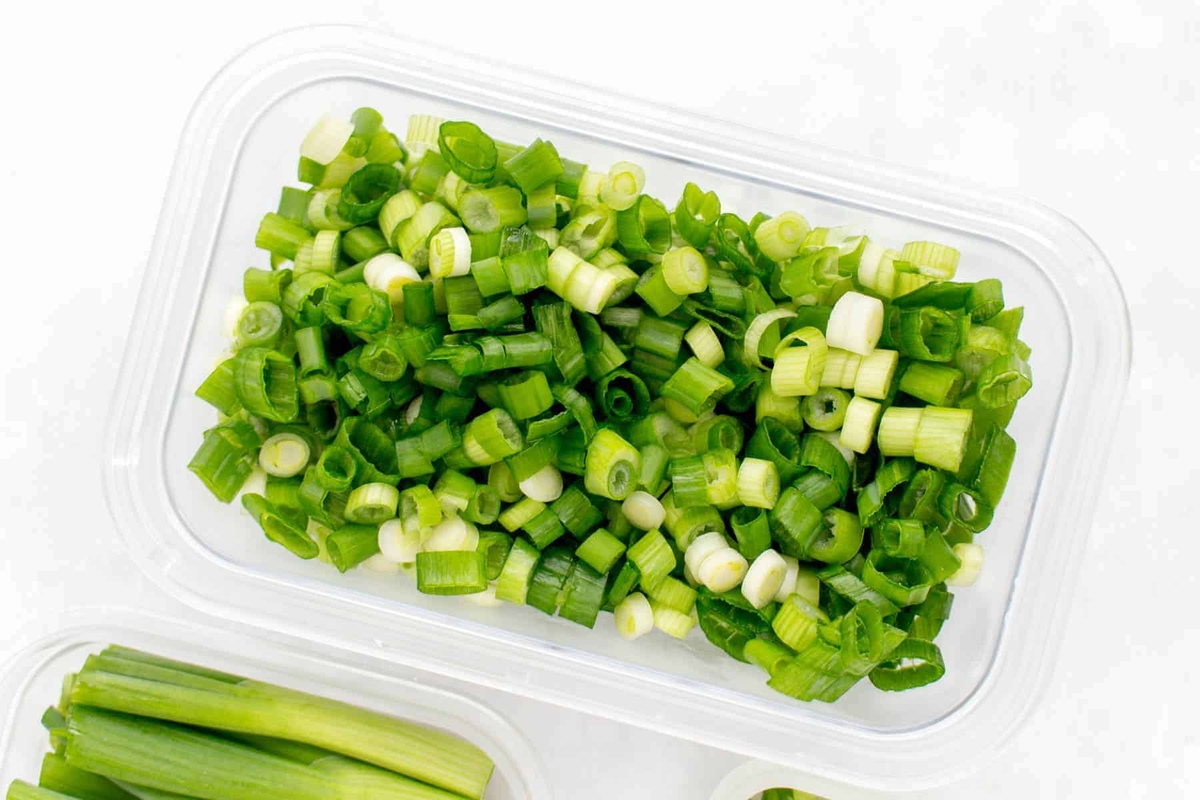
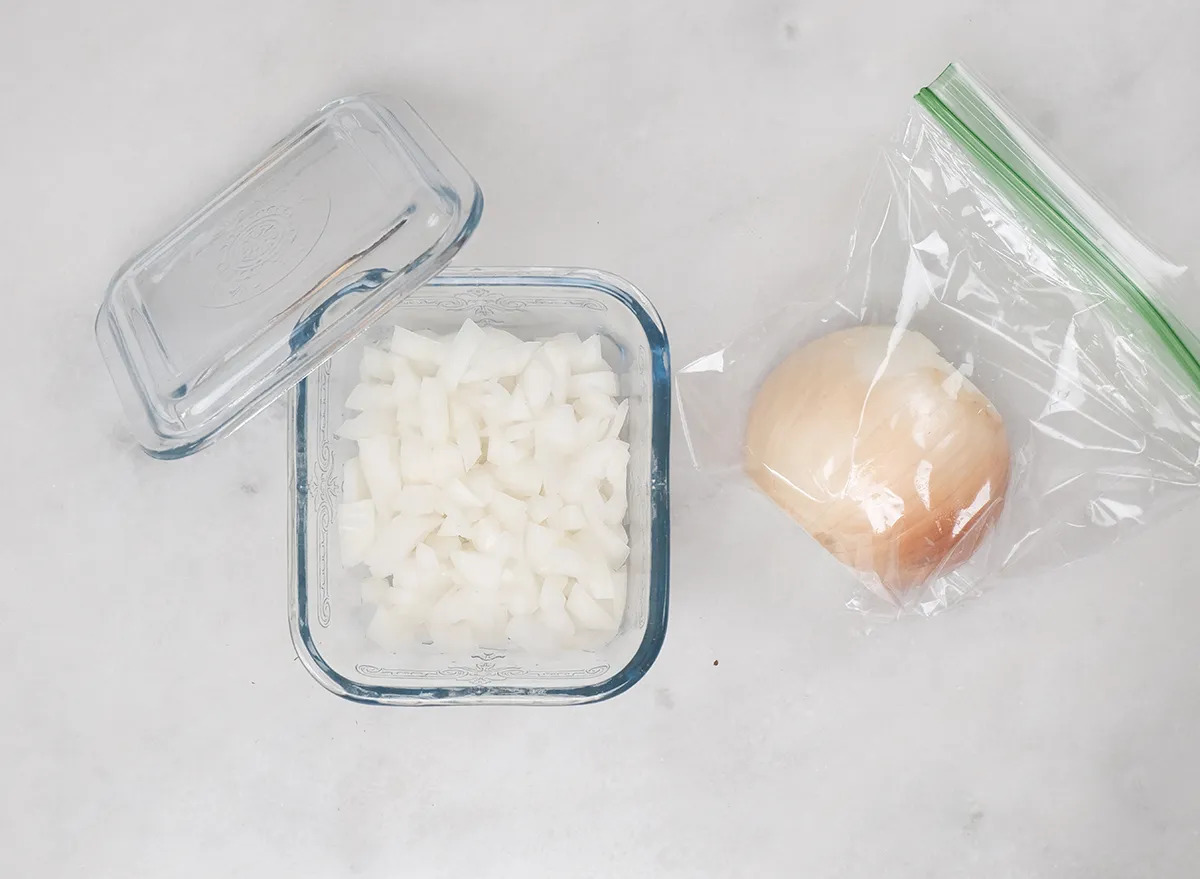
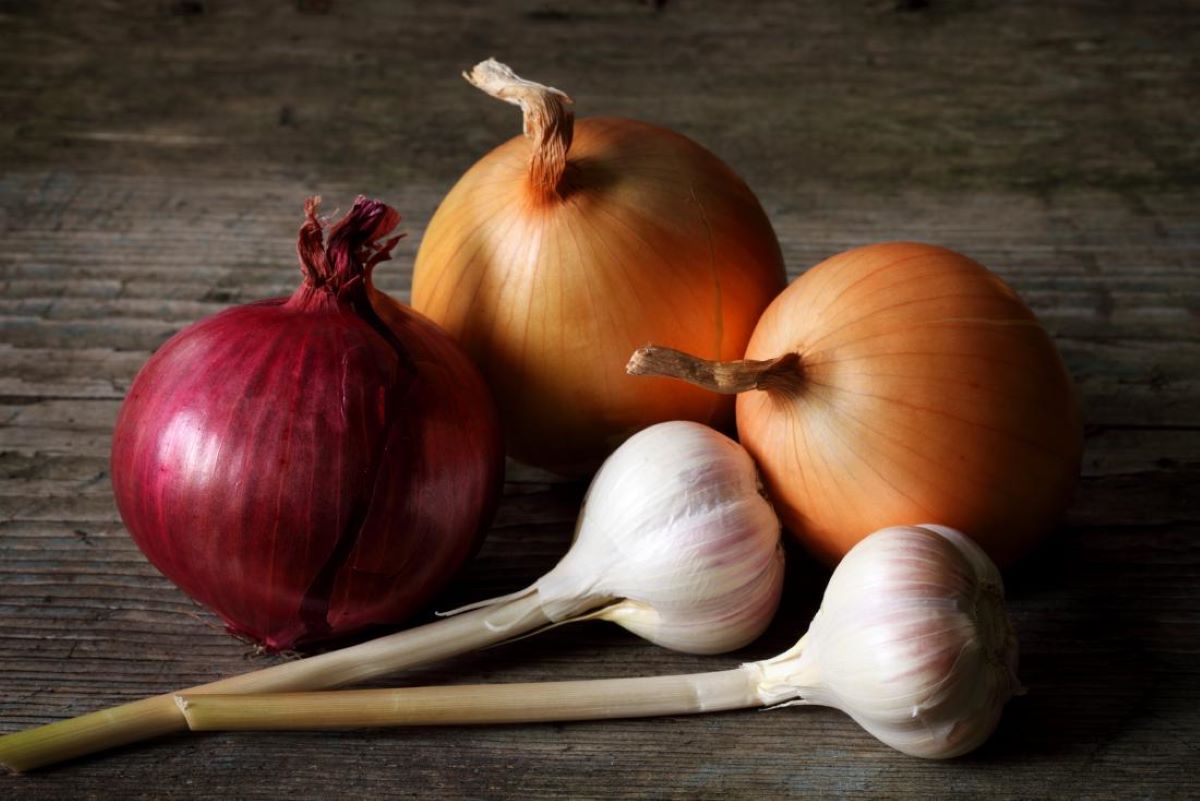

0 thoughts on “How To Store Green Onions In Water”